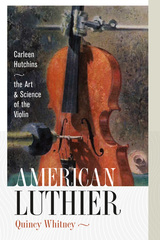
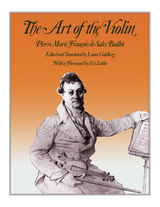
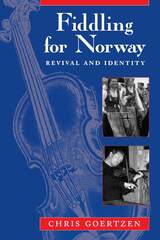
The book begins with an investigation of the people and events important to Norwegian folk fiddling, tracing the history of Norwegian folk music and the growth and diversification of the folk music revival. The narrative takes us to fiddle clubs, concerts and competitions on the local, regional, and national levels, and shows how conflicting emphases—local vs. national identity, tradition vs. aesthetic qualities—continue to transform Norwegian folk music. Goertzen utilizes a large anthology of meticulously transcribed tunes to illustrate personal and regional repertoires, aspects of performance practice, melodic gesture and form, and tune relationships. Ethnomusicologists and readers who fiddle will enjoy both the music and the stories it tells.
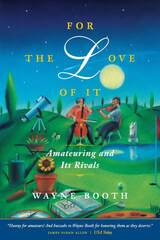
"If, in truth, Booth is an amateur player now in his fifth decade of amateuring, he is certainly not an amateur thinker about music and culture. . . . Would that all of us who think and teach and care about music could be so practical and profound at the same time."—Peter Kountz, New York Times Book Review
"[T]his book serves as a running commentary on the nature and depth of this love, and all the connections it has formed in his life. . . . The music, he concludes, has become part of him, and that is worth the price."—Clea Simon, Boston Globe
"The book will be read with delight by every well-meaning amateur who has ever struggled. . . . Even general readers will come away with a valuable lesson for living: Never mind the outcome of a possibly vain pursuit; in the passion that is expended lies the glory."—John von Rhein, Chicago Tribune
"Hooray for amateurs! And huzzahs to Wayne Booth for honoring them as they deserve. For the Love of It celebrates amateurism with genial philosophizing and pointed cultural criticism, as well as with personal reminiscences and self-effacing wit."—James Sloan Allen, USA Today
"Wayne Booth, the prominent American literary critic, has written the only sustained study of the interior experience of musical amateurism in recent years, For the Love of It. [It] succeeds as a meditation on the tension between the centrality of music in Booth's life, both inner and social, and its marginality. . . . It causes the reader to acknowledge the heterogeneity of the pleasures involved in making music; the satisfaction in playing well, the pride one takes in learning a difficult piece or passage or technique, the buzz in one's fingertips and the sense of completeness with the bow when the turn is done just right, the pleasure of playing with others, the comfort of a shared society, the joy of not just hearing, but making, the music, the wonder at the notes lingering in the air."—Times Literary Supplement

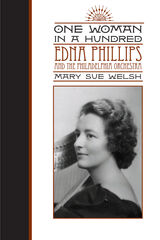
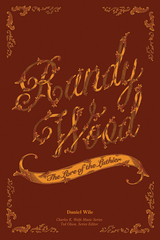
In the 1960s and 1970s, Randy Wood was a forerunner in the vintage instrument industry. Known as the instrument repairman to the stars, the list of Wood’s clients reads like a Hall of Fame roster: Elvis Presley, Eric Clapton, Johnny Cash, Chet Atkins, Emmylou Harris, Billy Gibbons, Bill Monroe, Keith Richards, Roy Acuff, Ricky Skaggs, and Hank Williams Jr. . . . to name a few. In Randy Wood: The Lore of the Luthier, Daniel Wile traces the life and work of a man who quietly influenced a hidden history of bluegrass and country music.
In his twenties, Wood vowed to avoid complacency in his work. What started simply as a quest to find fulfillment turned into a career that has shaped a generation of musicians, professional and amateur alike. Through his incredible gift for lutherie, Wood brought cherished pre-WWII instruments back to life, many of which were considered beyond repair. He crafted his own instruments as well, based on what he learned from vintage instruments, and these instruments found their way into the hands of some of the most renowned musicians, thanks in part to Wood’s strategic location in Nashville during the resurgence of country music in the 1970s. Humble, unassuming, and unfazed by the presence of celebrities, Wood has spent his life devoted to building and repairing stringed instruments.
Wood also built community. After tiring of big-city Nashville, he retreated to the Georgia coast, where his home shop became a hub of bluegrass activity. He eventually opened a new shop near Savannah, where a new generation of friends and strangers can come in, visit, and pick a little. Randy’s stories, complemented with those of his friends and family, create a compelling picture of a modest man with a talent for his craft, a genuine care for people, and the courage to follow his passion.
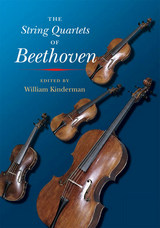
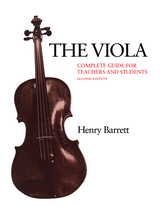
The second edition is extensively expanded in its graded lists of studies and solos
This book, in its encyclopedic catalog of viola literature in print, and (perhaps most important) in its treatment of the musical and pedagogical aspects of teaching the viola. A work already unique has been augmented in all its major aspects. The excerpts that follow are from reviews of the out-of-print first edition.
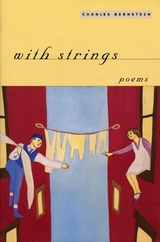
Charles Bernstein is perhaps best known as one of the founders of the L=A=N=G=U=A=G=E poetry movement of the 1970s. He remains one of America's liveliest advocates and practitioners of radically inventive poetry. The title of his new collection, With Strings, suggests the lush arrangement of a musical work as well as the unacknowledged implications of our everyday agreements. Just as language binds us together with its associated meanings, With Strings bounces against the ties that rend us apart as they fasten us together. From his samplings of everyday life, to his demented yet sonorous iambic beats, Bernstein has once again created a poetry of our time, for our time, and by our time.
READERS
Browse our collection.
PUBLISHERS
See BiblioVault's publisher services.
STUDENT SERVICES
Files for college accessibility offices.
UChicago Accessibility Resources
home | accessibility | search | about | contact us
BiblioVault ® 2001 - 2024
The University of Chicago Press









